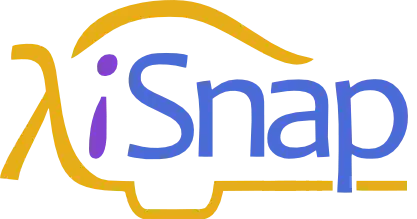iSnap: Data-driven Hints for Block-based Programming

Overview
Snap is an online, bock-based programming environment designed by researchers at UC Berkeley to make programming more accessible to novices. iSnap augments the environment with intelligent features including logging and data-driven hints.
iSnap is a project out of the HINTS lab in collaboartion with the Game2Learn lab at North Carolina State University, with lead development by Thomas Price. A public mirror of iSnap is available on GitHub, but it may be behind the development branch demoed here until features are ready for release.
The iSnap project has also produced various papers and public datasets, which can be found below.
The construction of a Snap program and the corresponding evaluation.
Data-driven Hints
Using data collected from real students working on programming assignments, we are able to generate on-demand, next-step hints for students who get stuck on these assignments. The SourceCheck algorithm matches students’ code to previously observed code from students who successfully completed the assignment and recommends an edit based on how those students progressed.

See an explanation of iSnap’s help features below, or try them out yourself at the iSnap demo. Select any assignment and test out the hints.
When a student needs help, they can ask iSnap to check their work. To start off, it shows two colors:
- Blocks that are highlighted in magenta probably don’t belong in a solution.
- Blocks that are highlighted in yellow probably do belong in the solution, but may not be in the right place.
Hovering over a yellow-highlighted block will show where it can be moved.
If a student requests a next-step hint, iSnap also adds:
- Blue + buttons and input outlines indicating where new blocks can be inserted
Clicking a button or highlighted input will show a next-step hint, comparing a student’s current code to iSnap’s suggested code. If the suggestion is followed, the button or input outline disappears, indicating the student has successfully followed the hint.
Previous Version of iSnap Hints
The above demo shows off iSnap’s newest hint interface, but much of the earlier research with iSnap used a simpler hint interface, based on the Contextual Tree Decomposition (CTD) algorithm. The assignment asks you to create a guessing game, in which the computer stores a random number and then repeated asks the player to guess it, telling them if they are too high, too low or correct.

When a student is stuck, they can request a hint with the click of a button.


Students can request hints about whole scripts or individual blocks.
Logging
iSnap logs all actions taken by students in the environment, as well as snapshots of students’ code as they work. Logs can be saved to a database for future analysis, review or grading.
Note: this is a demo site and does not include actual student data.

iSnap offers a basic interface to navigate and view the logs it generates.
Papers and Datasets
For all iSnap-related papers, see the list at the bottom of this page.
The iSnap project has also produced public datasets, consisting of log data from students working in an introductory computing class, which can be found on the PSLC Datashop.
For more information on the data-driven algorithm that powers iSnap, see:
-
(2017). Evaluation of a Data-driven Feedback Algorithm for Open-ended Programming. Proceedings of the International Conference on Educational Data Mining.
-
(2019). A Comparison of the Quality of Data-driven Programming Hint Generation Algorithms. International Journal of Artificial Intelligence in Education.
-
(2018). The impact of data quantity and source on the quality of data-driven hints for programming. Proceedings of the International Conference on Artificial Intelligence in Education.
-
(2016). Generating Data-driven Hints for Open-ended Programming. Proceedings of the International Conference on Educational Data Mining.
For more information on iSnap and its initial pilot evaluation, see:
-
(2017). Factors Influencing Students' Help-Seeking Behavior while Programming with Human and Computer Tutors. Proceedings of the International Computing Education Research Conference.